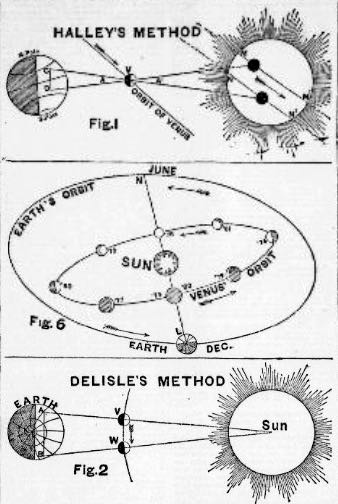
At the beginning of the 1900s, there was a tug of war between people who believed that Mars was populated and those who believed that Venus was the populated planet. These groups waged their verbal wars in newspapers across the Earth, pointing out why such-and-such a planet was better than the other one.

Venus, Not Mars, is Inhabited
Scientific News of London, speculating on Venus being inhabited, says:
“Though many speculations as to the possible inhabitants of Mars and the supposed engineering works (the so-called canals, etc.) have been mooted with more or less ingenuity, in our opinion the probabilities in favor of Venus are vastly greater. This planet, says Professor Young, is the earth’s twin sister in magnitude, density and general constitution.
“Surface markings have been seen from time to time upon the planet more distinctly observed in Italy and other more favored latitudes than our own. On account of its general proximity to the region of the sky in which the sun is found and its great brilliancy in the telescope. Venus is by no means an easy object to scrutinize with satisfactorily results.
“However, its phases, or changes of appearance, like the moon, are easily perceived with very small optical aid, and were among the first fruits of the invention of the telescope exactly three centuries ago. From certain irregularities observed upon the terminator, or boundary of the limb, and the blunted appearance of one of the cusps of the crescent, various observers have concluded that there exist high mountains upon the planet’s surface. Sometimes when the planet is in the crescent phase intensely bright spots have been seen near the polar regions, which may perhaps be ice caps like those seen on Mars. Darkish markings, indicating continents and seas ‘dimly visible,’ are also at times seen, and a rough map of Venus was made by Bianchini long ago. His observations were confirmed by thousands of observations made by De Vico and his assistants, so may be considered to represent real features of the surface.
“We have already stated that there is evidence of the existence of an atmosphere, and from observations of the transit of the planet across the sun’s disc in 1874 it was concluded that the atmosphere is about one and a half times to twice as extensive as our own. The existence of water vapor has been shown by the spectroscope.
“At times the dark portion of the planet, illuminated by the sun’s light, has been faintly visible, from which it has been considered probable that phenomena of the nature of the Aurora take place from time to time upon Venus. So far as known the planet has no satellite or moon attendant upon it, but, to a great extent, the want of a moon is made up for to the possible inhabitants by the earth. When Venus and the earth are nearest, as we have already said, they are on the same side of the sun, and the planet, turning its dark side toward us, is invisible, like the moon when new. On the other hand, the earth has the whole of its illuminated side turned toward the planet, is on the opposite part of the sky to the sun, and is consequently visible as a brilliant object (‘full earth’) in the night sky of the planet. We know from the phenomenon of earth shine that the earth reflects a considerable quantity of light to the moon, part of which is again reflected back to us, and if we suppose the intrinsic reflecting power of the earth’s surface to be equal to that of Venus (it may indeed be, and probably is, considerably less) it may give a much greater light to the planet and be a much more brilliant object in its sky than Venus ever appears to us, owing to the following circumstances: When brightest, only a small part of the planet’s illuminated surface is turned toward us, but even so it appears more conspicuous than any other star or planet in out sky, and is often visible in daylight. On the other hand, the whole of the earth’s illuminated hemisphere is turned toward Venus when they are at their nearest together, and the earth is then on the meridian at the planet’s midnight, being in opposition to the sun. Thus, as a night luminary, the earth, to some extent, plays toward Venus the part the moon does for us.”
Source: The Ogden standard. (Ogden City, Utah), 10 Aug. 1909.

